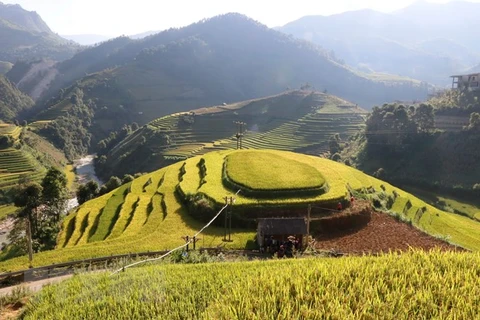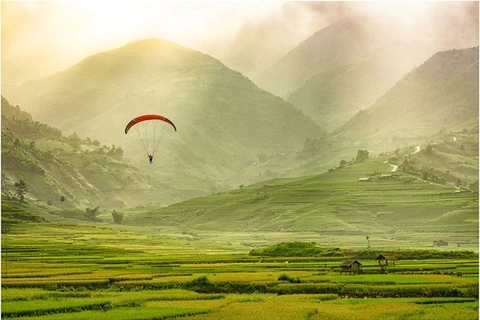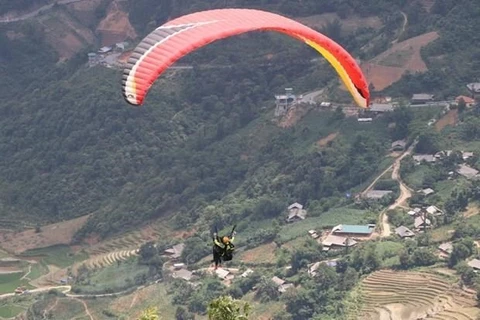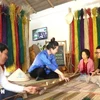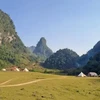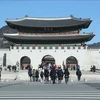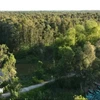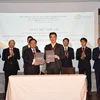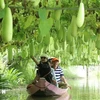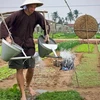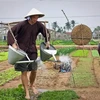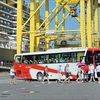Yen Bai (VNA) – Mu Cang Chai district of the northern mountainous province of Yen Bai has launched various measures to enhance tourism development.
In recent year, the district enjoyed an increasing number of tourists, as it welcomed 90,000 visitors last year, compared to just about 20,000 recorded in 2015.
More than 40,000 holidaymakers travelled to the district in this year’s first half.
Local authorities have instructed relevant agencies to implement the province’s resolutions on Mong ethnic group’s culture conservation and tourism services development in line with national sites of terraced rice fields and historical relics, said Secretary of the district’s Party Committee Nong Viet Yen.
The district will also work to conserve and promote traditional costumes of ethnic groups in the locality to bolster tourism.
It has stepped up communications to raise public awareness of environmental protection and development in eco-tourism, community-based tourism, resort tourism and adventure sport tourism.
Afforestation is also a priority in Mu Cang Chai. In late July, trees were planted on more than 100ha of natural preventive forests in an effort to raise income for local residents and create tourist landscapes. The acreage of trees and local flower plants is set to expand in the coming time.
Mu Cang Chai has 500ha of terraced rice fields cultivated for centuries by the Mong ethnic minority people in La Pan Tan, Che Cu Nha, and De Xu Phinh communes. This is among the 2,500ha recognised as a national heritage site in 2007 by the Ministry of Culture, Sports, and Tourism.
Terraced rice fields in Mu Cang Chai are beautiful year-round. Visitors in March can see glittering ponds before locals plant rice seedlings from April to May. After May, the hills are covered in green until the fields start to turn yellow with ripe rice in early September. During the harvest in October, the golden rice fields stand out amidst green forests.–VNA
In recent year, the district enjoyed an increasing number of tourists, as it welcomed 90,000 visitors last year, compared to just about 20,000 recorded in 2015.
More than 40,000 holidaymakers travelled to the district in this year’s first half.
Local authorities have instructed relevant agencies to implement the province’s resolutions on Mong ethnic group’s culture conservation and tourism services development in line with national sites of terraced rice fields and historical relics, said Secretary of the district’s Party Committee Nong Viet Yen.
The district will also work to conserve and promote traditional costumes of ethnic groups in the locality to bolster tourism.
It has stepped up communications to raise public awareness of environmental protection and development in eco-tourism, community-based tourism, resort tourism and adventure sport tourism.
Afforestation is also a priority in Mu Cang Chai. In late July, trees were planted on more than 100ha of natural preventive forests in an effort to raise income for local residents and create tourist landscapes. The acreage of trees and local flower plants is set to expand in the coming time.
Mu Cang Chai has 500ha of terraced rice fields cultivated for centuries by the Mong ethnic minority people in La Pan Tan, Che Cu Nha, and De Xu Phinh communes. This is among the 2,500ha recognised as a national heritage site in 2007 by the Ministry of Culture, Sports, and Tourism.
Terraced rice fields in Mu Cang Chai are beautiful year-round. Visitors in March can see glittering ponds before locals plant rice seedlings from April to May. After May, the hills are covered in green until the fields start to turn yellow with ripe rice in early September. During the harvest in October, the golden rice fields stand out amidst green forests.–VNA
VNA


